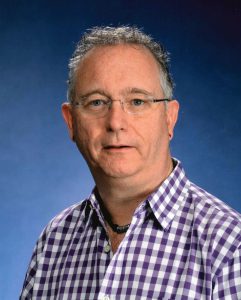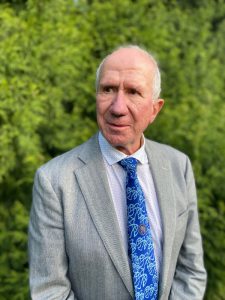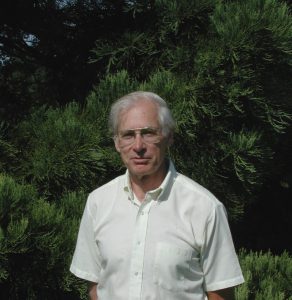Marcus Wallenberg Prize 2020 Winners Announced
Three researchers, Joseph J. Landsberg, Richard H. Waring and Nicholas C. Coops, share the 2020 Marcus Wallenberg Prize for a model to predict forest growth in a changing climate. Satellite imagery offers the possibility to scale up the model to show how different environmental conditions affect the world’s forests.
In the 1990s, Professors Joseph J. Landsberg, from Australia, and Richard H. Waring, from the USA, developed a model for forest growth that was based on simple plant physiological principles such as access to light, water, and nutrients. Professor Nicholas C. Coops, then working in Australia, now in Canada, added advanced satellite imagery analysis to the model. The result is a powerful tool for predicting growth and assessing the risks to the world’s forests posed by climate change. Joseph J. Landsberg, Richard H. Waring and Nicholas C. Coops are awarded the 2020 Marcus Wallenberg Prize of two million kronor for their achievements.
A simple model for difficult calculations
Joseph J. Landsberg and Richard H. Waring became pioneers when they presented their Physiological Principles Predicting Growth, 3PG model, in 1997 to predict forest growth under changing environmental conditions. The model is also able to calculate how actions, such as thinning and fertilisation, affect forest growth and development.
Forest growth forecasts have traditionally been based on forest surveys of previous growth without the ability to include changes in silviculture or the surrounding environment. A process-based model such as 3PG can also include the effects of silviculture and environmental factors and give predictions of current and future forest production.
“Nowadays, we are extremely interested in the carbon balance of forests, how much carbon can be taken up by the forest via photosynthesis, how carbon can be stored in the forest in the short and long term, and how we can increase the forest’s role in carbon binding with the aid of silviculture. 3PG serves as a bridge between traditional forest surveys and the large-scale, advanced carbon-balance calculations we need to carry out today”, says Annika Nordin, Professor at the Swedish University of Agricultural Sciences and a member of the Board of the Marcus Wallenberg Foundation.
Nicholas C. Coops has added satellite imagery analysis to the model to enable large areas of forest to be surveyed. Hence it is possible, among other things, to predict forest growth and carbon storage on a large scale, calculate how diversity of the forest landscape can be developed over time, and assess the risk of outbreaks of insects and large forest fires in inaccessible forest areas.
Used by both researchers and forest owners
From the start, Joseph J. Landsberg, Richard H. Waring and Nicholas C. Coops have allowed researchers and forest owners open access to the model. This has contributed to its rapid dissemination and adoption.
3PG is now one of the world’s most widely used models for assessing forest growth over large areas. Forest owners use it for purposes such as calculating volume, diameter and biomass development in fast-growing tree plantations. It can be applied to species as diverse as eucalyptus and pine, in monocultures and in mixed species stands, across different climates and landscape types from Australia and New Zealand to Europe and North America.
“Joseph Landsberg, Richard Waring and Nicholas Coops are awarded this year’s Marcus Wallenberg Prize for providing us with a unique tool that is able to predict forest growth with great certainty in different environmental conditions in forest areas of varying sizes. The model has created a bridge between science and practice in forestry and helps us to be better equipped for the future”, says Johanna Buchert, Chairperson of the Marcus Wallenberg Prize Selection Committee.
King Carl Gustaf XVI will award the 2020 Marcus Wallenberg Prize to these three scientists during a ceremony in Stockholm, Sweden.
The prize-winners
Nicholas C. Coops was born in Melbourne, Australia, in 1968 and received his PhD at the Royal Melbourne Institute of Technology in Australia in 1995. Until 2003 he was employed at the Commonwealth Scientific and Industrial Research Organisation, CSIRO, Australia, where he initially worked on the 3PG model with Joseph J. Landsberg and Richard H. Waring. Today he is a Professor at the University of British Columbia, Vancouver, Canada, where he holds a Canada Research Chair in remote sensing. His research has focused on the use of remote sensing techniques to gain an in-depth knowledge of forest structure, health, biological function and diversity as well as further development and application of the 3PG model globally. He has published more than 460 scientific articles in joint authorship in scientific journals.
Joseph J. Landsberg was born in Harare, Zimbabwe, in 1938. He graduated from the University of Natal and spent a number of years in agricultural research before moving to Scotland, then England. He obtained his PhD from the University of Bristol, UK. His research has focused on the interactions between climate, weather and forests around the world. He was Chief of the Division of Forest Research in the Commonwealth Scientific and Industrial Research Organisation, CSIRO, from 1981 to 1988 and has been Adjunct Professor at Charles Sturt University, Bathurst, and at the University of Queensland, Brisbane – all in Australia. He was a visiting professor at NASA between 1993 and 1994, and at the University of Helsinki, Finland, in 1998. He is an External Member of the Finnish Academy of Science and Letters and was the holder of a Visiting Erskine Fellowship at the University of Canterbury, Christchurch, New Zealand in 2002. He has published four books concerned with the physiological ecology of forests as well as more than a hundred articles, reports and chapters in books.
Richard H. Waring was born in 1935 in Chicago, Illinois, USA, and received degrees in Forest Management and Botany from the University of Minnesota. After receiving his PhD at the University of California, he was a professor at Oregon State University. He has been a visiting researcher at many universities and research institutions around the world – The Ecosystems Centre in Woods Hole, Massachusetts, and NASA headquarters in Washington DC, both in the USA; the University of Western Australia in Perth, Australia; the Swedish University of Agricultural Sciences in Uppsala, Sweden; the University of Innsbruck, Austria; the University of Edinburgh, UK; the Commonwealth Scientific and Industrial Research Organisation, CSIRO, in Canberra, Australia; and the University of Waikato, New Zealand. He is now Distinguished Professor Emeritus of Forest Science at Oregon State University, USA, and has published more than 130 articles in scientific journals, along with three editions of a textbook on Forest Ecosystems and numerous book chapters.
About The Marcus Wallenberg Prize
The Marcus Wallenberg Prize was established in 1980 to be awarded once a year to an individual researcher or a small group of researchers for a ground-breaking discovery or development in an area of importance to the forest industry. The aim is to recognise, encourage and stimulate path breaking scientific achievements which contribute significantly to broadening knowledge and to technical development within the fields of importance to forestry and forest industries.
Contact:
Mikael Hannus – Executive Secretary – mikael.hannus@mwp.org – +46 (0) 70-3775702
Source: Marcus Wallenberg Foundation




